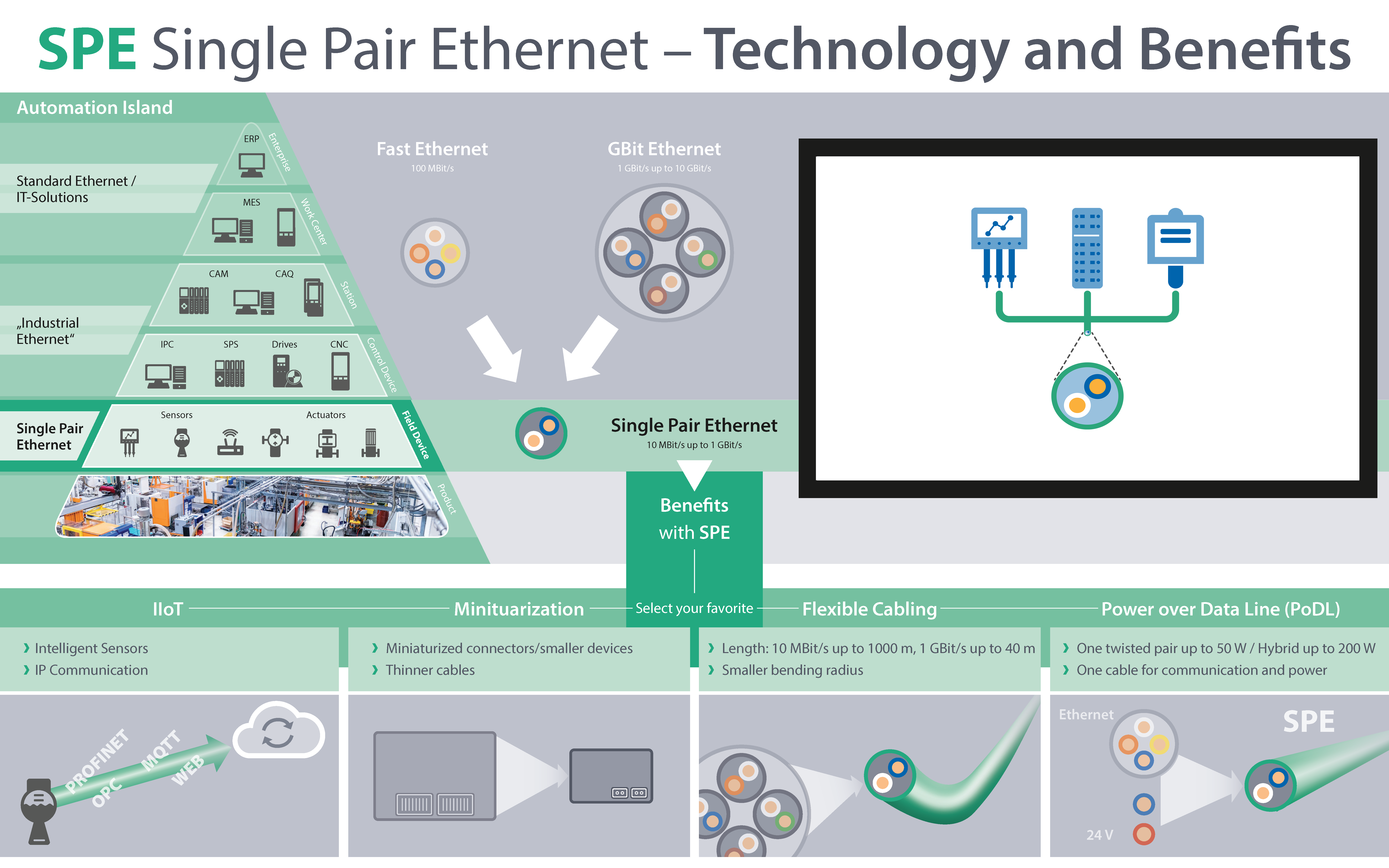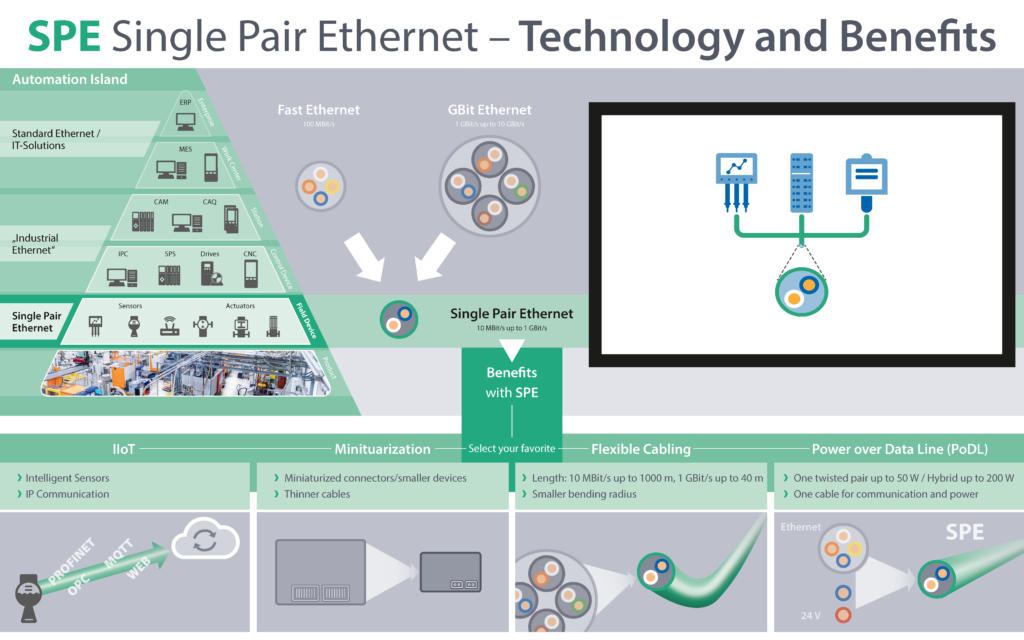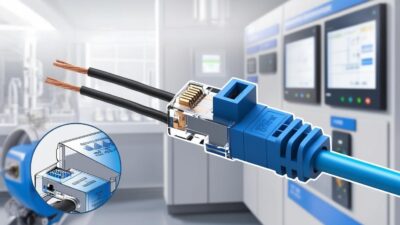Single-pair Ethernet (SPE) is a networking technology designed to provide Ethernet connectivity over a single set of twisted-pair copper wires instead of the traditional two pairs or more. SPE can bring power over the same two wires with cable runs greater than Fast Ethernet’s 100-meter limit. At 10 Mbit/s, SPE allows for distances of up to 1,000 meters.

Single-Pair Ethernet Insights
- Miniaturized connectors, compared to traditional 4-wire Ethernet allow for smaller devices, in addition to space saved by also providing power.
- Smaller connectors are accompanied by thinner cables that have a tighter bending radius. Separate cabling for power is no longer required.
- Devices connected via SPE can accept voltages (12V, 24V, 48V) yielding power classes up to 50 W.
Single-pair Ethernet found its way into the automation and control markets via Ethernet-Advanced Physical Layer (APL), the intrinsically safe version of SPE. A need in the process control industries to adapt SPE for hazardous environments was met with an effort known as 2-Wire Intrinsically Safe Ethernet (2-WISE).
The same companies that created Ethernet-APL want to ensure SPE will function equally well without intrinsic safety. It is projected these harmonization activities will commence in 2025 to standardize its power classes. This will ensure SPE products from all vendors can connect seamlessly.
In November 2024, PROFIBUS & PROFINET International (PI) announced a harmonized mating face for SPE connectors. PI Working Groups put forth a concept based on the hybrid IEC 63171-7 plug variant –– but adapted for IP20 and IP65 (M8 and M12) environments. Until then, no single connector had been agreed upon.

Figuring out the future of SPE Ethernet
The Ethernet-APL Group decided 10 Mbit/s SPE (10BASE-T1L), due to its long-distance capabilities, was best suited for process control plants. Such speeds are hundreds, or in some cases, thousands of times faster than current technologies. Even outside the process control industry, 10 Mbit/s satisfies many use-cases. However, SPE can be utilized at 100 Mbit/s (100BASE-T1L) with cable runs of potentially up to 500 meters, or at 1 Gbit/s for up to 40 meters. Therefore, work has begun to prepare PROFINET for these standards, when they emerge.
How SPE Ethernet increases transparency
Single-pair Ethernet allows for even the smallest devices at the field level to utilize the same protocols as those at higher levels. Transparency and data throughput are greatly increased, making the realization of IIoT/Industry 4.0 use-cases easier than ever before.
Michael Bowne is executive director, PI North America, the organization for Profinet, Profibus and other networking technologies. Edited by Sheri Kasprzak, managing editor, Automation & Controls, WTWH Media, [email protected].


